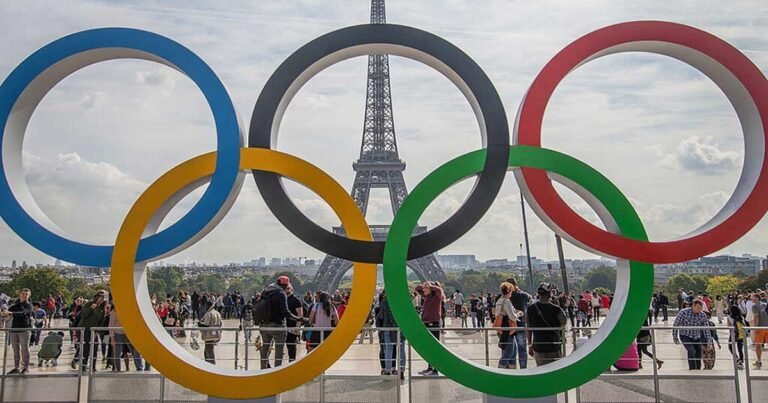Soccer at the Olympics is more than just a competition—it’s a stage where raw talent, national pride, and thrilling moments come together. It offers a unique blend of seasoned professionals and rising stars, making it one of the most eagerly anticipated events of the Olympic Games. Whether you’re a die-hard soccer fan, a casual sports enthusiast, or just someone who loves the Olympics, the soccer segment of the Games is bound to captivate you.
This blog dives into everything you need to know about the soccer Olympics—its history, format, star players, and even the controversies that have surrounded it. Stick around for FAQs and an insightful table summarizing key stats and facts about this global phenomenon.
Table of Contents
A Brief History of Soccer at the Olympics
Soccer has been part of the modern Olympics since the 1900 Games in Paris. Initially contested as an amateur sport, it included only men’s teams and was primarily seen as a prelude to professional soccer tournaments. Women’s soccer was introduced much later, debuting at the 1996 Atlanta Games, and has since become one of the marquee events.
Landmark Moments in Olympic Soccer History
- 1908 London Games: The first official soccer tournament was recognized, won by Great Britain.
- 1984 Los Angeles Games: Revitalized interest in Olympic soccer with the introduction of professional players representing under-23 teams.
- 1996 Atlanta Games: Women’s soccer made its debut, with the U.S. team clinching the gold medal and igniting a legacy.
- 2016 Rio Games: Neymar’s penalty kick delivered Brazil its first Olympic gold medal, an emotional victory in soccer’s spiritual home.
How Does Soccer at the Olympics Work?
The format of Olympic soccer differs from other major tournaments like the FIFA World Cup. It’s designed to foster competition while promoting youth talent. Here’s a breakdown:
For Men’s Soccer:
- Teams consist of under-23 players, with an allowance of three overage players.
- The tournament includes a 16-team lineup, divided into four groups.
- After the group stage, it moves into a knockout format, culminating in a gold medal match.
For Women’s Soccer:
- There are no age restrictions.
- The competition features 12 teams, thinning out to quarterfinals, semifinals, and then finals.
This unique format levels the playing field by promoting young talent while still allowing seasoned players to make their mark.
Why the Soccer Olympics Stands Out
Olympic soccer may not have the scale of the FIFA World Cup or continental championships, but it holds its unique charm. Here’s why:
1. Spotlight on Emerging Talent
The tournament is a proving ground for young players. Icons like Lionel Messi, Neymar, and Marta first gained international recognition during their Olympic runs. Watching these rising stars compete often feels like catching a glimpse of the future of soccer.
2. National Pride on Display
Unlike club competitions, the Olympics feature national teams, bringing a sense of pride and camaraderie that’s hard to replicate. Countries rally behind their teams as they chase gold.
3. Unique Mix of Players
The under-23 rule for men ensures that youthful exuberance meets the experience of overage players, creating a dynamic and unpredictable tournament.
4. High-Stakes Matches
With fewer teams and a direct knockout format, every match becomes a do-or-die scenario, leading to some truly thrilling moments on the field.
Table of Past Winners and Key Facts
| Year | Host Country | Men’s Gold Winner | Women’s Gold Winner | Iconic Moment |
|---|---|---|---|---|
| 1908 | London | Great Britain | N/A | First official soccer Olympic event |
| 1996 | Atlanta | N/A | United States | Women’s soccer debut |
| 2008 | Beijing | Argentina | United States | Messi’s breakthrough performance |
| 2016 | Rio de Janeiro | Brazil | Germany | Neymar’s emotional penalty kick |
| 2021 | Tokyo | Brazil | Canada | Canada wins its first women’s gold medal |
FAQs About Soccer at the Olympics
1. Why is there an age restriction for men’s soccer?
The age restriction ensures the Olympics remain a platform for developing young talent while avoiding overlap with the FIFA World Cup’s spotlight.
2. Are professional players allowed in Olympic soccer?
For men, professional players are allowed but must be under 23, with the exception of three overage players. For women, there are no age or professional restrictions.
3. Which country has won the most gold medals in Olympic soccer?
Brazil leads in men’s soccer with 2 golds (2016 and 2021), while the U.S. dominates women’s soccer with 4 golds.
4. How is Olympic soccer different from the FIFA World Cup?
Olympic soccer has fewer teams (16 for men, 12 for women) and includes an under-23 rule for men’s teams, whereas the FIFA World Cup is open to all players regardless of age.
5. Where will the next Olympic soccer games be held?
The Paris 2024 Games will host the next round of soccer competitions.
What Makes the Soccer Olympics Special?
Whether it’s a nail-biting penalty shootout, a breakout performance from an emerging star, or the patriotic pride that comes with national teams competing, Olympic soccer has an emotional pull that’s hard to match. It offers soccer fans a high-stakes, high-energy event that bridges the gap between seasoned tournaments like the World Cup and other club events.
If you’re a soccer enthusiast, the Olympics aren’t just about athleticism—they’re a celebration of global unity through the world’s most-loved sport.

